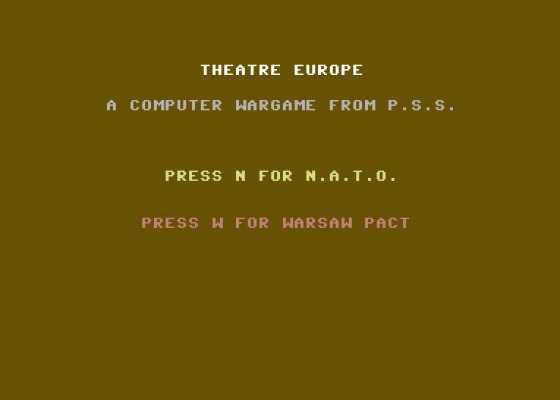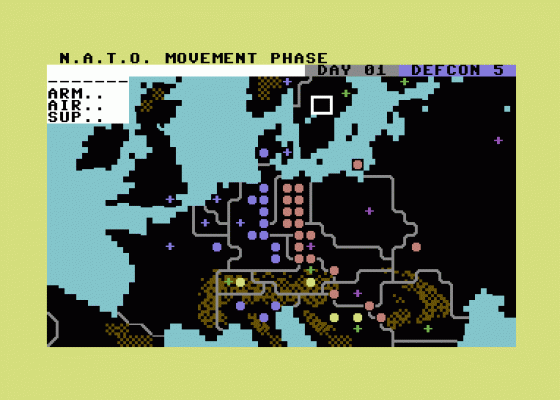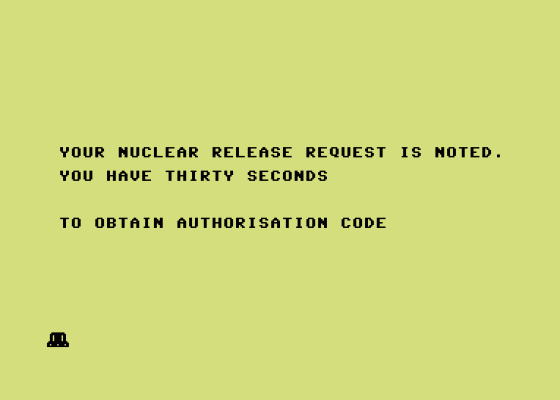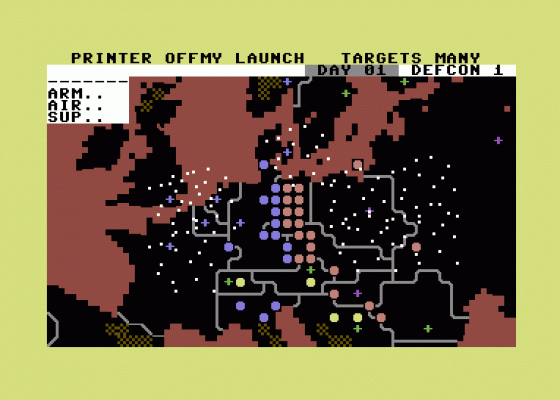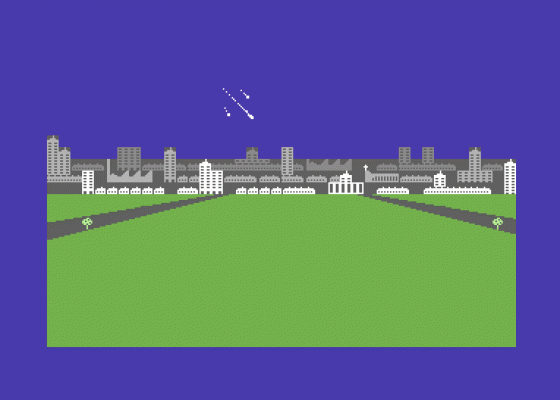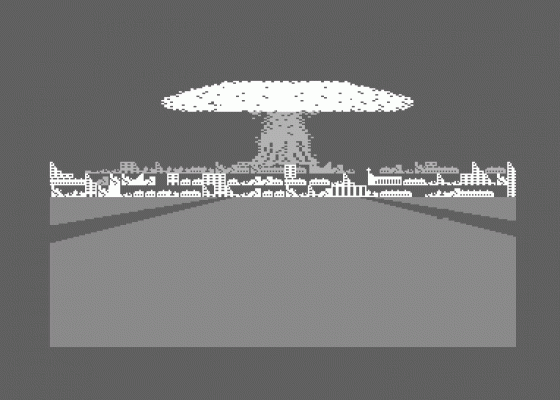
Computer Gamer
 1st June 1985
1st June 1985
Categories: Review: Software
Publisher: PSS
Machine: Commodore 64
Published in Computer Gamer #3
Theatre Europe
Theatre Europe simulates the first thirty days of the next war as the forces of Nato and the Warsaw pact battle for control of West Germany. The Warsaw pact will win if they smash the Nato forces by taking West Germany, Nato by stopping this and therefore halting their advance. As the supreme commander of either side you control an impressive force of conventional forces, as well as chemical and nuclear weapons.
Theatre Europe is played in game-turns in which you move your forces (via joystick-controlled cursor) and attack adjacent enemy. Whenever possible you should attack enemy units with at least three of your own.
Each unit has a specific combat or ARM strength which is reduced by combat. When this reaches zero, the unit is lost. Units also need supply (SUP) and air cover. These will also be depleted but along with ARM strengths, can be reinforced at the end of most turns.
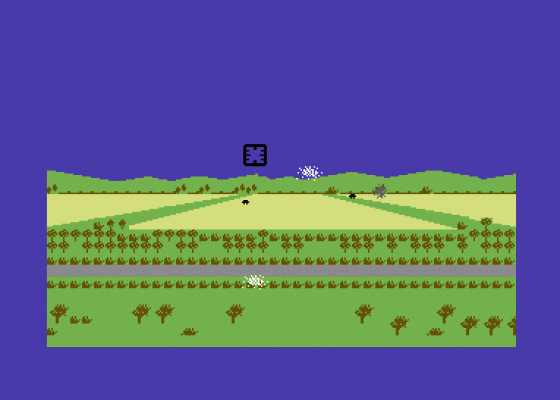
Each turn you will also be given an opportunity to flex your fire button finger on the game's action screens. These are used to simulate one of the battles fought that turn. Using your joystick, you must fire and guide missiles to destroy enemy tanks and planes. Your performance in assisting this attack will affect all of the other battles one way or another.
Therefore, if you're not a joystick genius, you should ignore this phase or you will give yourself a handicap you could well do without!
As well as controlling his land forces, a player can command air missions and launch chemical and nuclear strikes. You have only a limited number of planes in your air force and so should allocate them carefully to the various missions at your disposal. These include reconnissance to determine the strength of enemy units, counter air to weaken the enemy air force and interdiction attacks to delay and destroy enemy reinforcements. In addition there is the continuing battle of air superiority which will affect the success of other missions. You can also use your aircraft in assault breaker attacks on enemy units to support your ground troops.
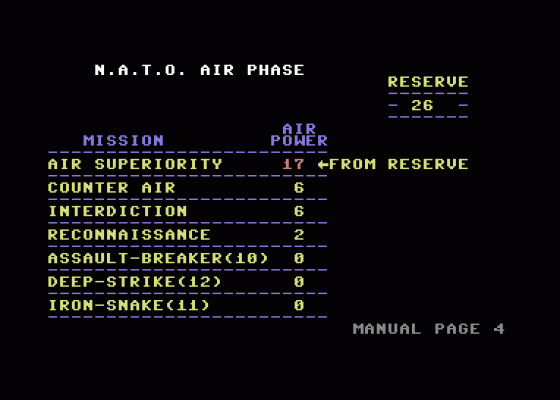
The enemies supply and reinforcements can be affected by a strategic chemical strike which will destroy an important enemy supply city. Nuclear weapons may also be used in this manner or against individual units. Obviously there is a risk of a response from the enemy in using these weapons which is likely to result in the destruction of the world in which case no one would win.
In the top right hand corner of the screen is the defcom display which begins the game set at 5. Every time a warhead is launched, the figure is reduced. When this reaches one, the enemy will launch an all out nuclear attack with predictable results.
Your computer opponent will employ a number of strategies depending on the game level you have selected. At level one it will avoid nuclear weapons unless provoked. Level two follows accepted Nato or Warsaw pact strategies and level three may launch an all-out attack at any time.

At the end of the game you will be awarded a command rating which indicates your success. My first few attempts resulted in the end of the world and a 0% rating. Twelve hours of continuous play later and I was able to win as either side with a rating of over 80%.
One final gripe is that the choice of colours for the units, a predictable red or blue, means that the game is almost impossible to play on a black and white TV.
Amstrad, Atari and MSX versions will be available soon.
Other Reviews Of Theatre Europe For The Commodore 64
Theatre Europa
A review by C. R. (Pressmakarna Mediabyra Ab)
Theatre Europe (PSS)
A review


